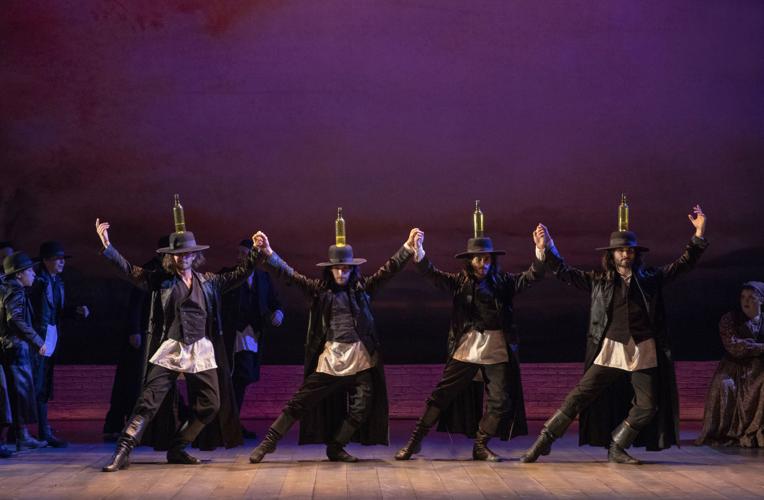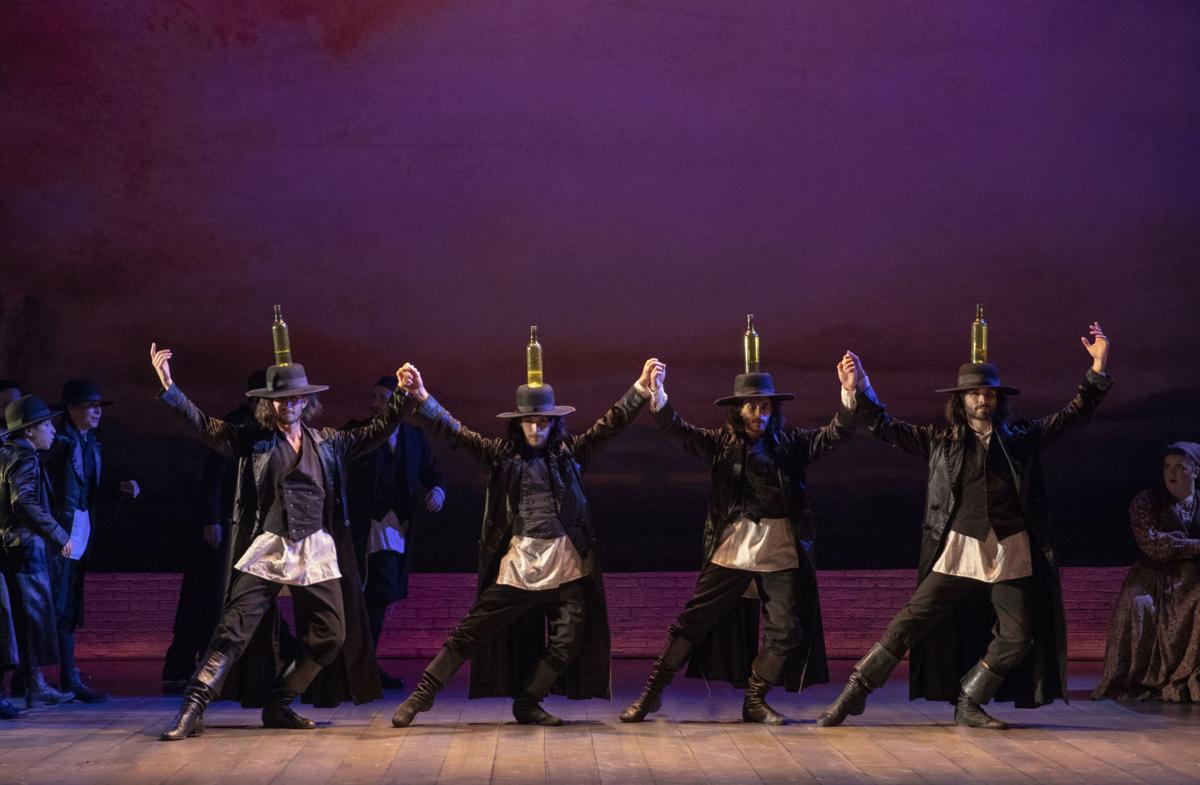Four years ago, a revival of “Fiddler on the Roof” burst onto Broadway bringing in much praise, big audiences and with what the New York Times called “an echo of modernity.”
Broadway in Tucson brings the road show of that production to Centennial Hall April 9-14.
“Fiddler” is packed with gorgeous music that lives in the memory long after the curtain has fallen. Songs such as “Sunrise Sunset,” “If I Were a Rich Man” and “Tradition” have been adored and sung by many since the play first hit Broadway in 1964.
The story has been embraced just as much. Based on tales by Yiddish author and playwright Sholem Aleichem, “Fiddler” takes place in 1905 in the small Russian shtetl of Anatevka. Tevye serves as a sometimes narrator. He is a poor milkman with five daughters, three of marrying age. He is anxious to find them a match. Tevye and the other Jewish members of the community celebrate, argue, talk and pray as they try to hang on to their traditions and beliefs in the face of the the czar’s oppressive actions. The story is about family, community and survival.
Jerome Robbins directed the original Broadway show, and subsequent productions carried his signature. His choreography is generally the dance that the Robbins estate insists be used.
But few restrictions were placed on director Bartlett Sher, who tapped Hofesh Shechter to choreograph. Shechter, who has his own London-based modern dance company, had never choreographed a musical before. But he grew up in Israel and “Fiddler” was in his DNA, says Christopher Evans, the associate choreographer.
And while Shechter honored Robbins’ original dances — especially in the famous bottle dance scene, which varies just slightly from the original — he wanted to make the dances more organic. Inspired by the folk dances he performed as a youth, he worked to give the sense that this was a community of people who break into dance when there’s joy, sorrow or even for no reason at all, says Evans.

Israeli-born Hofesh Shechter updated the choreography for this road show of “Fiddler on the Roof.”
Shechter, who was nominated for a Tony for his work in “Fiddler,” made sure the road show had that same sensibility.
So two weeks before rehearsals began for the traveling production, Evans met with the cast. They improvised, explored and began to connect as a community.
“We were just getting into the style and the language of dance,” he recalls, speaking by phone from London. “By the time Hofesh arrived (for the start of rehearsals), we were all connected. It was a very embryonic start with the cast. There’s a whole different beat to restaging, which has a completely new cast. We wanted to make sure the dance doesn’t just get slapped on.”
That pre-rehearsal bonding must have worked. Like the production, the choreography is getting high praise.
“The new choreography … is nothing short of exhilarating,” crowed the St. Louis-Post Dispatch.
And the South Florida Sun-Sentinel had this to say about the production heading our way: “Here the dance is a melange of movement — folk, modern — steeped in faith with a tableaux from a ritual suddenly appearing, hanging in the air for a split second only to be whisked away from view in a crouched spin and whirl of motion. It is thrilling to watch.”






